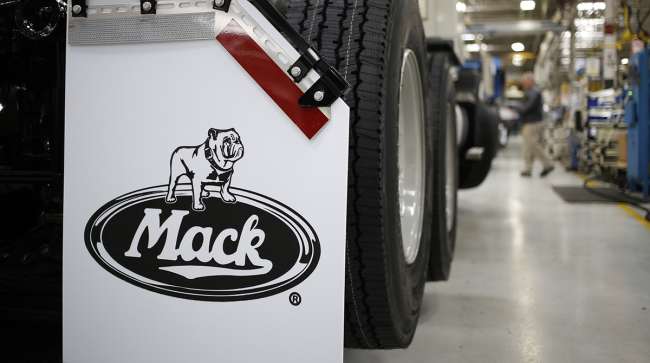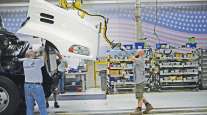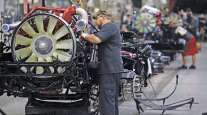Senior Reporter
Class 8 Orders Leap to Second-Highest Level Ever

North American Class 8 orders in January unexpectedly surged to the second-highest total amid new tax breaks, strong freight rates, dwindling production slots and efficient vertically integrated powertrains, analysts reported.
The orders hit 48,700, according to ACT Research Co., which cited a preliminary total it will revise once truck makers issue the final data in mid-February.
Research company FTR pegged the January volume at 47,200, also citing a preliminary total.
Both figures surpassed all other months except March 2006, when the total was 52,194. That was when fleets rushed to order and pre-buy trucks ahead of 2007 models that reduced tailpipe emissions, but also were less fuel efficient and more costly to operate.
January saw fleets blow the doors off the expected orders, FTR Vice President of Commercial Vehicles Don Ake said.

Ake
“The truck makers weren’t expecting this,” Ake said. “Now, it’s a case where we are back into everybody wanting to reserve their production slots. Once you get past a certain point, it goes crazy. You probably have orders now in the fourth quarter that are very high while we are still a distance away.”
One truck maker executive said the demand was widespread.
“I think the demand is up in really all segments. I would say that they are probably in terms of percentage growth, maybe a little bit higher demand on the daycab side,” Paccar Inc. CEO Ron Armstrong said in an earnings conference call with financial analysts in January.
Daimler Trucks North America, the market leader in U.S. retail sales of Class 8 trucks, pointed to the growing appeal of vertically integrated powertrains.
“Our Freightliner New Cascadia with Detroit power is an exceptional success, as 99% of all new Cascadia orders include a Detroit engine. We are really looking forward to 2018 and continuing to work to earn the trust and support of our customers,” said Richard Howard, DTNA senior vice president of sales and marketing.
ACT cited tax reform as the most likely reason for the unexpected increase in orders.
“There is just nothing else that makes sense,” ACT Vice President Steve Tam said.

Tam
The Tax Cuts and Jobs Act, signed into law in December, means companies are allowed to revalue tax-deferred liabilities as of Dec. 31, 2017, to reflect the new 21% federal corporate income tax rate, down from 35%.
The law also permits full expensing of most types of equipment placed into service between Sept. 27, 2017, and Dec. 31, 2022, according to American Trucking Associations.
“We are having a stellar January,” said Jeff Sass, Navistar International Corp. senior vice president of North America truck sales and marketing.
“Orders were incredibly strong both on the Class 8 and medium-duty side. January has exceeded all of our expectations,” Sass said.
Navistar is the parent of the International Truck brand.
There is a significant amount of optimism among fleets since that tax law passed, Sass said. Also, the last two years have been an under-buy and there is some pent-up demand. “A lot of things are going right and the only thing holding some of the industry back is a shortage of drivers.”
Meanwhile, capacity has tightened but spot rates have begun to edge down, suggesting the market is finding an equilibrium, Tam said.
But capacity continues to remain historically tight, FTR Chief Operating Officer Jonathan Starks said in a company release.
“And truckers are taking advantage of the opportunity with spot rates on the Truckstop.com load board up 30% year-over-year in January,” Starks said. “Near-record levels can’t last for long, but orders could stay quite elevated throughout the spring.”
FTR said North American Class 8 orders for the past twelve months have totaled 316,000 units.
Clearly capacity has tightened, but if you look at spot rates over the last four or five weeks, they have started to edge down as opposed to continuing to increase, said Tam. “But where does it go from here? I don’t think anyone knows the answer. We are all trying to figure that out as we go. But to me this [order total] seems to be a vote that folks are expecting better economic and freight growth than what is in the forecast or the books, right now, and trying to position themselves accordingly.”




